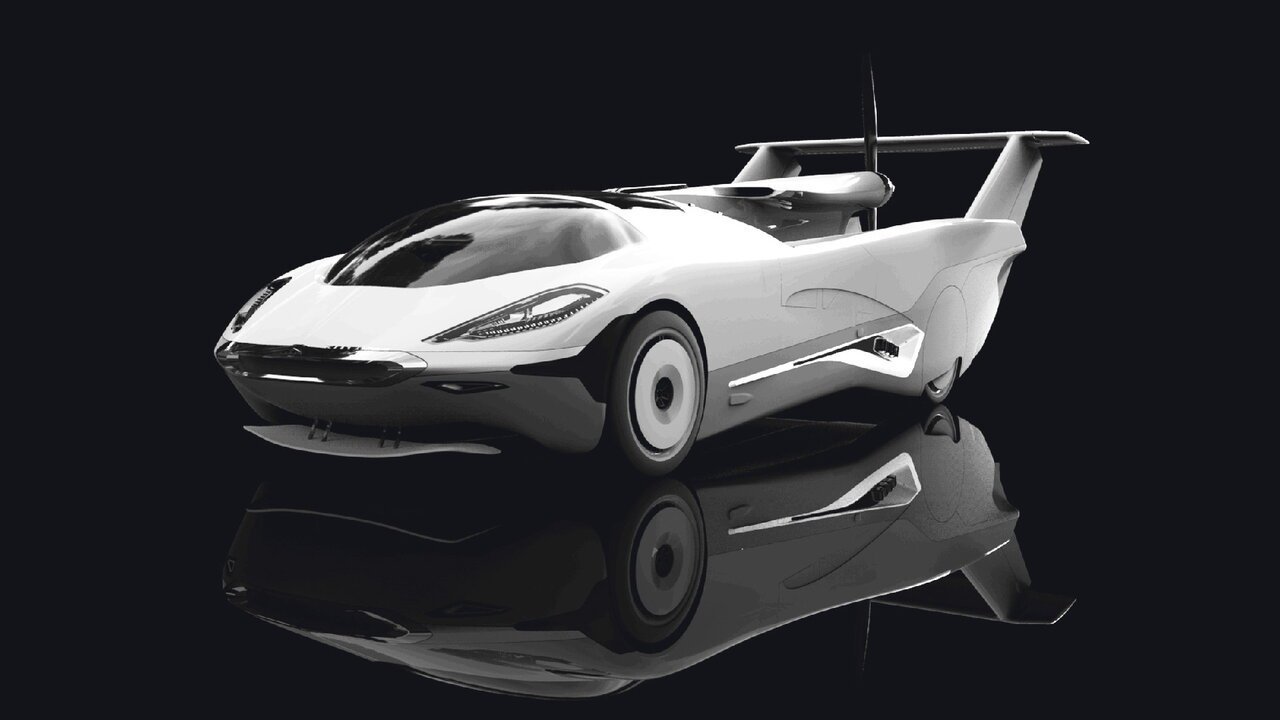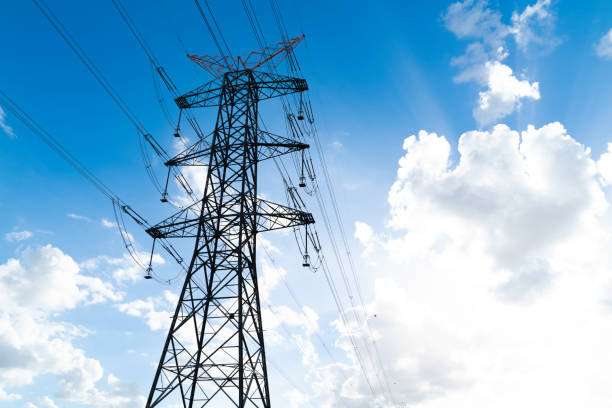Since the early days of science fiction, the flying car has hovered tantalizingly at the edge of our dreams. From Jetsons-like hovercrafts to gleaming air taxis darting between futuristic skyscrapers, humanity has long imagined a future where cars don’t just roll—they soar.
Today, that vision is closer to reality than ever before. Across the world, engineers, entrepreneurs, and governments are investing in the technologies needed to bring flying cars out of the realm of fantasy and into our daily lives. And as these innovations take off—literally—another critical question emerges: will flying cars be electric?
At the heart of this question lies a deeper issue. The 21st century is not just about innovation; it is about responsibility. Climate change, urban congestion, and dwindling fossil fuel reserves are reshaping how we think about transportation. As the skies open up to personal and urban air mobility, there’s a collective push to ensure these new machines are not just thrilling, but sustainable.
The Intersection of Technology and Environment
Electric cars on the road have already begun to transform the transportation landscape. Tesla, Rivian, Lucid, and other companies are proving that electric drivetrains are not only viable but desirable. With cleaner emissions, smoother performance, and increasingly affordable battery technology, the automotive world is tilting toward electrification.
Now, aviation is following suit. Though traditionally dominated by kerosene-fueled jets and gas-guzzling propellers, flight is seeing a renaissance of electric propulsion. This convergence is happening just in time. According to the International Civil Aviation Organization, global aviation accounts for over 2% of CO₂ emissions, and that number is expected to climb.
If flying cars are to become more than novelties or niche toys for the wealthy, they must evolve in harmony with environmental imperatives. Electric propulsion offers a path toward cleaner skies, quieter cities, and more responsible mobility.
What Are Flying Cars, Really?
Before we dive into the electric vs. combustion debate, it’s worth defining what we mean by “flying cars.”
Most people envision a vehicle that operates on both the ground and in the air. In reality, the term now broadly refers to VTOLs (Vertical Take-Off and Landing aircraft), eVTOLs (the electric version), and air taxis. These are compact aerial vehicles designed for short-range urban and regional flights, typically piloted by humans—though autonomous versions are also in development.
They are not just fantasy anymore. Dozens of companies around the world, from Silicon Valley startups to aerospace giants like Airbus and Boeing, are prototyping or even testing vehicles. Names like Joby Aviation, Archer, Lilium, and Vertical Aerospace are making headlines for their innovative designs and bold promises.
These flying cars aren’t meant to replace commercial airlines. Instead, they aim to offer rapid, point-to-point mobility in congested urban areas—bypassing traffic, reducing commute times, and expanding the geography of cities.
And the vast majority of them? They’re being built electric from the ground—or rather, the sky—up.
Why Electric? The Power of Clean Propulsion
So why is the electric model dominating the conversation around flying cars?
There are several compelling reasons—technical, environmental, economic, and strategic—that make electric propulsion not just attractive, but arguably essential for the future of airborne mobility.
First, electric motors are vastly simpler than internal combustion engines. They have fewer moving parts, require less maintenance, and are inherently more reliable—critical advantages for aviation safety.
Second, electric propulsion allows for distributed thrust. Traditional aircraft are limited to one or two large engines, but electric systems can power multiple small rotors or fans across a vehicle’s frame. This enables more stable flight, smoother vertical takeoff and landing, and radically new design paradigms that were impossible with gas engines.
Third, noise reduction. A major challenge with urban air mobility is sound pollution. No one wants a swarm of noisy aircraft buzzing over their homes. Electric motors are significantly quieter than combustion engines, especially when integrated into ducted fans or tilt-rotor configurations.
Fourth, the environmental impact. As the world strives to meet carbon neutrality goals, aviation is under increasing scrutiny. Electric flying cars offer the potential for zero local emissions, especially when charged with renewable energy.
Lastly, public perception and regulation. There is a growing social and political appetite for green technologies. An electric flying car is not only more marketable—it’s more likely to receive regulatory support and infrastructure investment.
The Battery Bottleneck
Of course, nothing comes easy. While electric flying cars sound like the perfect solution, there is a major technological hurdle: battery energy density.
In simple terms, batteries today are not yet as powerful per kilogram as jet fuel. Aircraft require significant energy for takeoff, sustained flight, and landing. And every extra kilogram of battery reduces payload—passengers, luggage, or flight range.
Lithium-ion batteries, the current industry standard, have made impressive strides. But even the best-performing cells today offer around 250–300 Wh/kg (watt-hours per kilogram), whereas aviation-grade kerosene can deliver over 12,000 Wh/kg.
This discrepancy means that electric flying cars are, at least for now, limited in their range and payload capacity. Most current prototypes can only fly 20 to 100 miles and carry 2–5 people. That’s enough for urban and short intercity hops, but not for cross-country travel.
This limitation has spurred enormous research into new battery chemistries—like solid-state, lithium-sulfur, and metal-air systems. Each offers potential advantages in weight, cost, safety, and sustainability. But these technologies are still maturing.
Until then, flying cars may operate in a niche where range isn’t everything—serving as premium air taxis, emergency responders, or specialty cargo carriers in dense, high-value areas.
Hybrids and Hydrogen: The Bridge to Full Electrification?
Given the current limitations of battery technology, some flying car developers are exploring hybrid solutions. These vehicles use a combination of electric motors and small combustion generators to extend range and flexibility.
While not as green as fully electric options, hybrids can serve as transitional platforms—offering longer range, faster recharge/refuel times, and familiar engineering frameworks. For regions with limited charging infrastructure or harsh weather, hybrids may offer more robust performance.
Another intriguing possibility is hydrogen fuel cells. These devices convert hydrogen gas into electricity, emitting only water vapor. Hydrogen is extremely energy-dense by weight, and fuel cells are quieter and cleaner than combustion engines.
Several aerospace firms are investing in hydrogen-powered aircraft, and the technology could scale down for flying cars. However, challenges remain in hydrogen production, storage (it must be kept under high pressure or cryogenically cooled), and distribution.
If the infrastructure puzzle can be solved, hydrogen could offer a path to electric flight without the battery bottleneck.
Building the Infrastructure for Electric Skies
Technology alone isn’t enough. For electric flying cars to become mainstream, they need a robust ecosystem: charging stations, air traffic control, maintenance hubs, emergency systems, regulations, and more.
This is where urban planning and public policy intersect with aerospace engineering.
Imagine “vertiports” instead of gas stations—compact hubs on rooftops or parking garages where eVTOLs can land, recharge, and take off. These facilities would need high-voltage power access, smart grid integration, and turnaround times comparable to today’s fueling stops.
Airspace management will also be key. You can’t have hundreds of flying vehicles crisscrossing urban skies without risking chaos. NASA, the FAA, and aviation authorities worldwide are working on UAM (Urban Air Mobility) air traffic systems that use automation, GPS, and AI to ensure safe, coordinated operations.
Moreover, governments will need to set standards for noise, emissions, safety, certification, and pilot licensing. Just as EV adoption required new rules and incentives, flying cars will need a supportive legal framework.
Finally, energy production matters. An electric flying car charged from a coal-powered grid is not truly green. The shift must be holistic: integrating renewable energy sources, energy storage, and grid resilience into the transportation equation.
The Economics of Electric Air Mobility
One major criticism of flying cars is that they’ll be toys for the rich. But proponents argue that electric propulsion changes the economics.
Compared to helicopters—which are noisy, expensive, and fuel-hungry—electric VTOLs are cheaper to maintain, cheaper to operate, and potentially cheaper to manufacture at scale. Once battery costs fall and production ramps up, air mobility could become accessible to middle-class commuters, not just billionaires.
Analysts envision a future where a 20-minute flight across a city costs no more than a high-end Uber ride. That price point would open flying cars to business professionals, emergency responders, tourists, and even school transportation.
The ripple effects could be huge: decentralized urban development, less reliance on subways or roads, revitalized suburban communities, and new industries focused on air mobility services, maintenance, and logistics.
Cultural and Psychological Barriers
As with any major technology shift, the challenge is not just technical or economic—it’s human.
Many people are still wary of flying cars. They fear crashes, mechanical failures, hijackings, noise pollution, and the chaos of crowded skies. The shift from driver to pilot is a psychological leap not everyone is ready to make.
Even fully autonomous systems, which promise to remove human error, are met with skepticism. Would you trust a drone to fly your children to school?
Public education, incremental rollouts, and rigorous safety records will be essential. Just as early cars required paved roads, traffic laws, and driver education, flying cars will require a new social contract—one that blends excitement with responsibility.
A Glimpse into the Electric Future
Despite the hurdles, the future is coming—and it’s electric.
Cities like Dubai, Singapore, Los Angeles, and Paris are already piloting urban air mobility projects. Major aerospace players are investing billions in electric propulsion. Battery breakthroughs are occurring at unprecedented speed.
The dream of personal flight may finally become a part of daily life—not as a loud, smoky spectacle, but as a clean, efficient, silent revolution.
Electric flying cars won’t just change how we move. They’ll change how we build cities, power infrastructure, manage airspace, and connect with one another. They’ll blur the lines between ground and sky, between car and plane, between machine and ecosystem.
And as they lift off—on electric wings—they carry not just people, but the promise of a sustainable tomorrow.
Final Thoughts: Electric Dreams, Real Futures
Flying cars, once a trope of retro-futurism, are now a tangible horizon. But unlike the chrome-plated, exhaust-spewing machines of old sci-fi, the real revolution will be green. Electric.
The path to that future isn’t easy. Battery limits, airspace complexity, public fear, and infrastructure gaps remain real obstacles. Yet the momentum is undeniable.
We are building the skyways of the 21st century—quietly, sustainably, and with a vision that fuses innovation with responsibility. The flying cars of tomorrow won’t just take us places.
They’ll take us forward.






